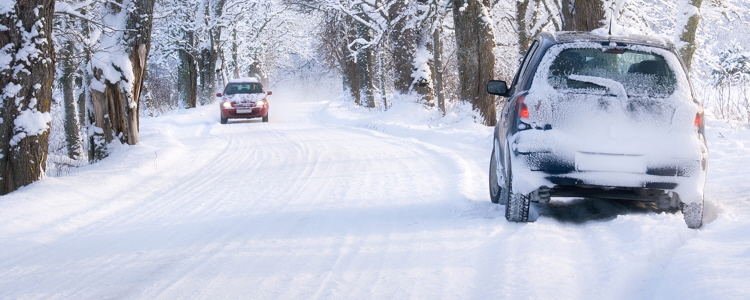Winter is here, and anyone living in a cold-weather state needs to keep certain things in mind when it comes to winter car care. At Drivers Lane, we’re here to help you stay in the know for your winter on the road.
Separating Fact from Fiction
It’s important to keep up with proper winter maintenance to keep your car running right. Everybody has their own list of tips and tricks for making the snow and ice of the season a little easier to deal with, but some of those tried and true methods handed down through generations may be outdated – some may even do more damage than good.
Engine Myths
 Myth: One of the top winter myths is the need to let your car warm up. Some people start their car each morning before leaving thinking they’re doing what’s best. This myth of letting a car idle for optimum performance was born in the days of carburetors, which needed time to warm up for smooth performance.
Myth: One of the top winter myths is the need to let your car warm up. Some people start their car each morning before leaving thinking they’re doing what’s best. This myth of letting a car idle for optimum performance was born in the days of carburetors, which needed time to warm up for smooth performance.- Truth: Today’s fuel-injected engines are designed to idle properly, even when the temperature plummets and, compared to driving, an idling engine doesn’t build up much heat. In fact, the best way to warm up your engine is to drive your car. Letting your vehicle idle for extended periods of time could even be harming your engine on cold days. The reason is engine oil dilution – idle time increases the chances of raw gasoline seeping into the oil. This leads to decreased lubrication properties, and eventually increased engine wear.
Tire Myths
- Myth: Another popular myth often heard: winter tires aren’t necessary. This one is especially popular among people who have all-wheel drive or those who use all-weather tires. However, winter tires can mean a great improvement in traction no matter what you drive.
- Truth: The latest generations of winter tires are designed to stay flexible in freezing temperatures, unlike older and non-winter tires which stiffen in colder weather, causing loss of traction and grip. All-weather tires are good for all seasons, but don’t provide maximum performance in either summer or winter. As for all-wheel drive (AWD) vehicles, they’re designed to make the most of your traction, but AWD does nothing to improve your stopping or cornering ability.
- Myth: Under-inflating your tires in winter will help with traction control.
- Truth: Driving on tires with improper tire pressure is never a good idea. Under-inflated tires won’t improve your traction, and driving on them could cause excessive wear or damage your tires.
The Ultimate Winter Fact Check
The truth is, there'll always be a latest tip, trick, or quick-fix for vehicles, no matter what you drive. The best bet for keeping your car in optimum condition throughout the winter is to read your owner’s manual and stay up-to-date on the latest products available for winter driving. It’s also good to know your area, and the weather that can affect it, so you can be prepared no matter what.
If winter has taken a toll on your vehicle, but bad credit issues have you wondering where to turn, Drivers Lane wants to help. We work with a nationwide network of new and used special finance dealers that have lenders available to work with people in many credit situations. Let us help you take the first step toward your next vehicle. Simply fill out our online auto loan request form so we can point you in the direction of a local dealer who can help. Get started today!



















